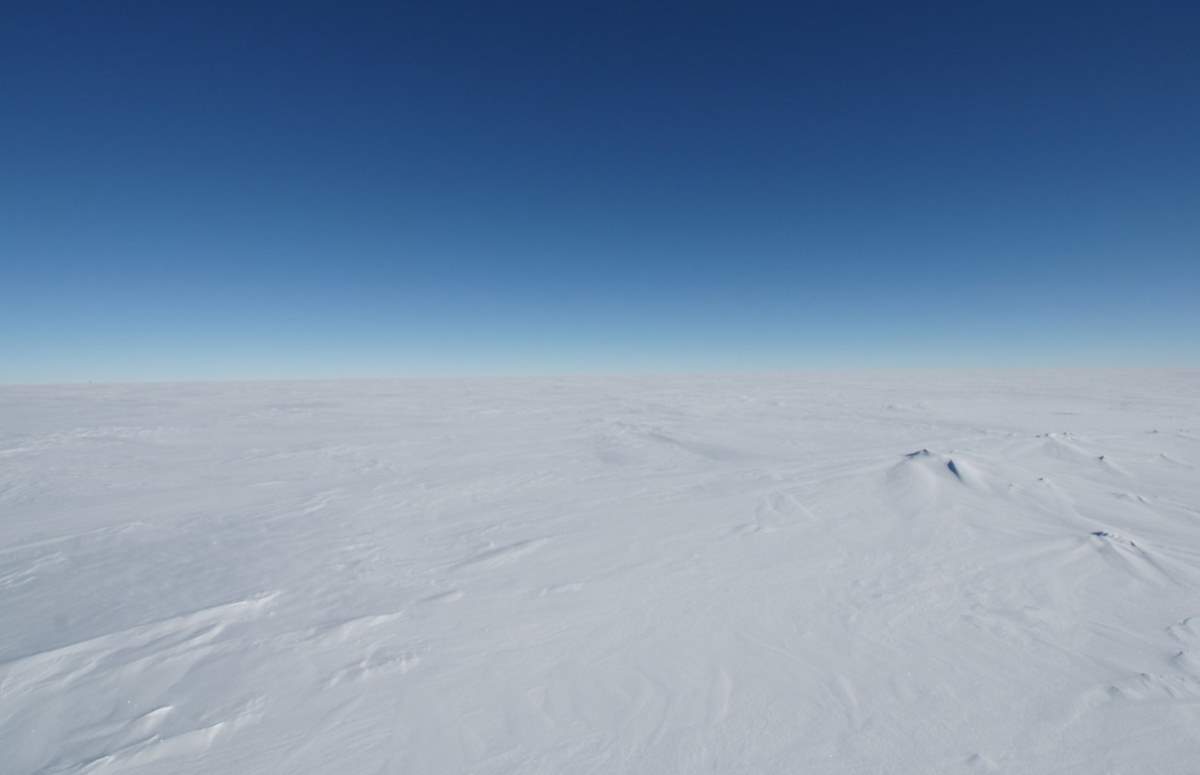According to a new study published this week in the AGU (American Geophysical Union) journal Geophysical Research Letters, several spots on the East Antarctic Plateau reach temperatures of nearly -100 °C (-148 °F) during the Antarctic winter. Researchers re-examined the data from several Earth-observing satellites and found that Antarctica, the coldest place on Earth is even colder than previously thought.
The measurements were made between 2004 and 2016 by MODIS instruments aboard NASA’s Terra and Aqua satellites as well as instruments on NOAA’s (U.S. National Oceanic and Atmospheric Administration) Polar Operational Environmental Satellites.

East Antarctic Plateau: The Coldest Place on Earth
In 2013, scientists announced that they had detected the lowest temperature ever recorded on Earth’s surface: -93 degrees Celsius (-135 degrees Fahrenheit). Now, after re-examining weather data acquired by satellites for this region (East Antarctic Plateau), the same researchers have found that temperatures at several spots had actually dipped lower than previously thought, to a record-setting -98 °C (-144.4 °F) on several occasions between 2004 and 2016.
The study says: “The lowest measured air temperature on Earth is -89.2 °C (-129 °F) on 23 July 1983, observed at Vostok Station in Antarctica (Turner et al., 2009). However, satellite data collected during the Antarctic polar night during 2004-2016 reveals a broad region of the high East Antarctic Plateau above Vostok that regularly reaches snow surface temperatures of -90°C and below. These occur in shallow topographic depressions near the highest part of the ice sheet, at 3800 to 4050 m elevation.
Comparisons with nearby automated weather stations suggest that air temperatures during these events are near -94±4 °C or about -138 F. Ultra-cold conditions (below -90 °C) occur more frequently when the Antarctic polar vortex is strong. This temperature appears to be about as low as it is possible to reach, even under clear skies and very dry conditions, because heat radiating from the cold clear air is nearly equal to the heat radiating from the bitterly cold snow surface.
It cannot get any colder on Earth
Well, at least naturally.
According to the researchers, for the temperature to drop to that record low, skies must be clear and the air must be bone-dry for several days. After the temperature drops below a certain point, the air cools so slowly that it can’t get perceptibly colder before the weather conditions change. -98 °C (-144.4 °F), then, appears to be the limit to how cold it can get at Earth’s surface.
Ted A. Scambos of the National Snow and Ice Data Center, the University of Colorado at Boulder, Boulder, Colorado, U.S.A, has said: “There’s a limit to how long the conditions persist to allow it to cool to these ultra-low temperatures and a limit to how much heat you can actually get through the atmosphere because water vapor has to be almost nonexistent in order to emit heat from the surface at these temperatures”.
To go any lower, these conditions would have to persist for several weeks, which is extremely unlikely according to the scientists.
Sources
- “New study explains Antarctica’s coldest temperatures” on Phys.org
- Study: “Ultra-low surface temperatures in East Antarctica from satellite thermal infrared mapping: the coldest places on Earth”. Geophysical Research Letters
- “Scientists Detect Coldest Temperature Ever Recorded On Earth’s Surface” on Newsweek.com
- “Coldest Place On Earth Is Colder Than Scientists Thought” on news.agu.org
- “This is the Coldest Place on Earth” on TodayDiscovered.com
- Moon Landings: All-Time List [1966-2025] - February 2, 2025
- What Is Max-Q and Why Is It Important During Rocket Launches? - January 16, 2025
- Top 10 Tallest Rockets Ever Launched [2025 Update] - January 16, 2025

